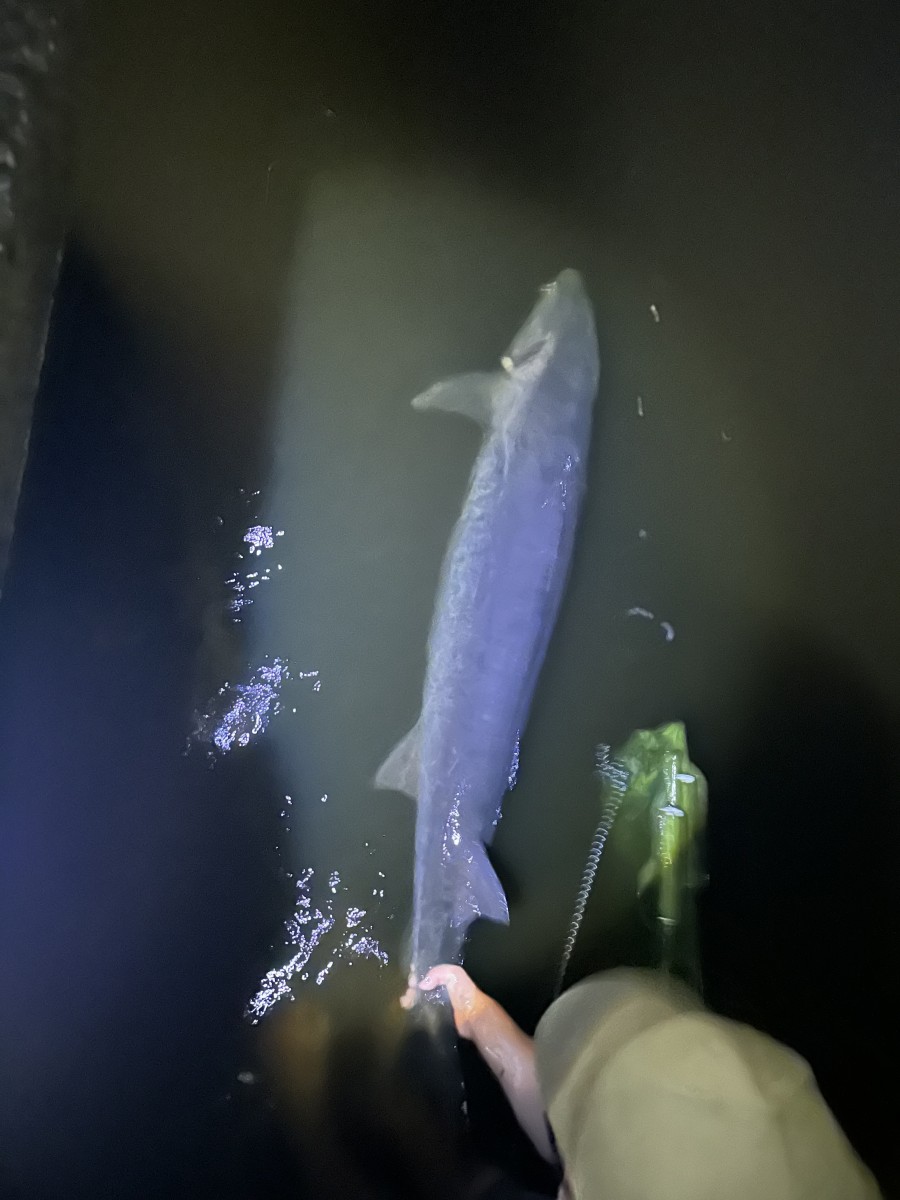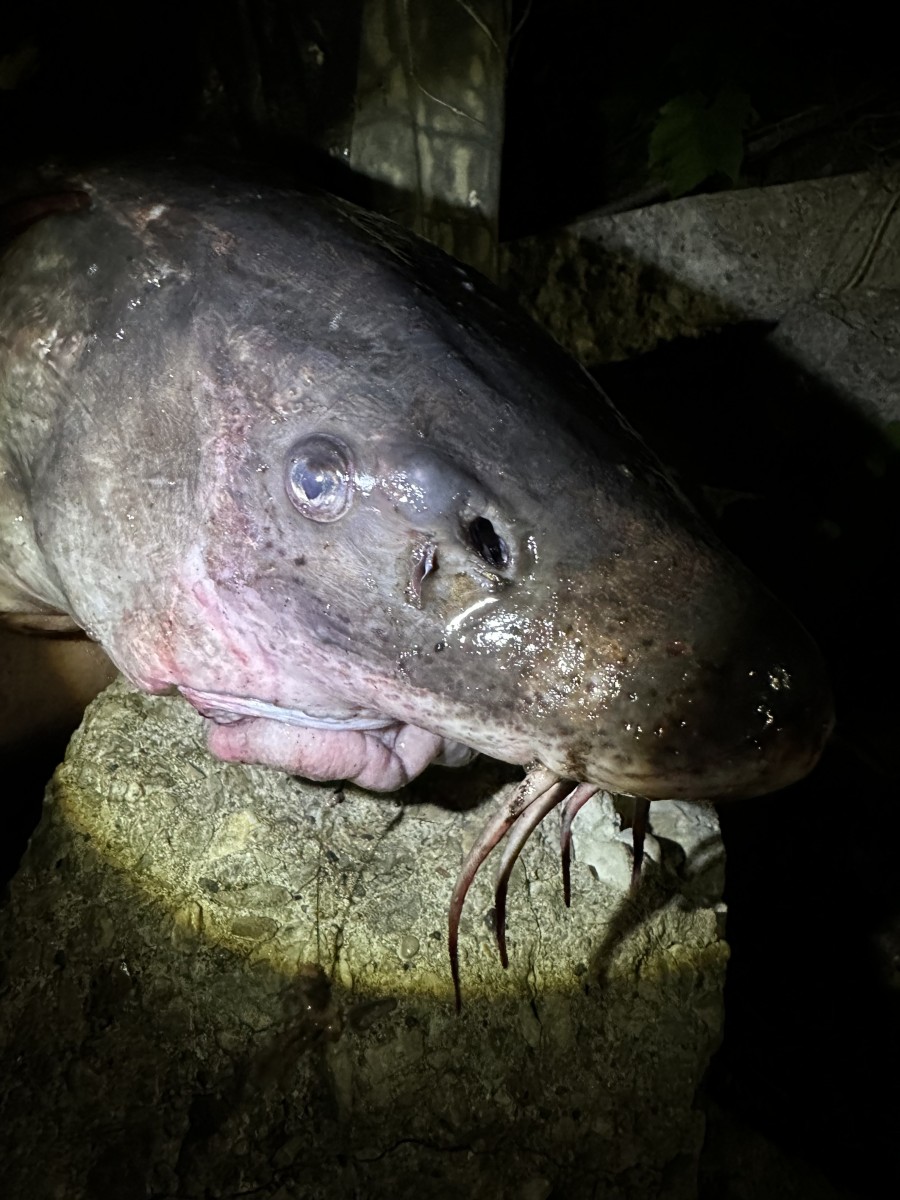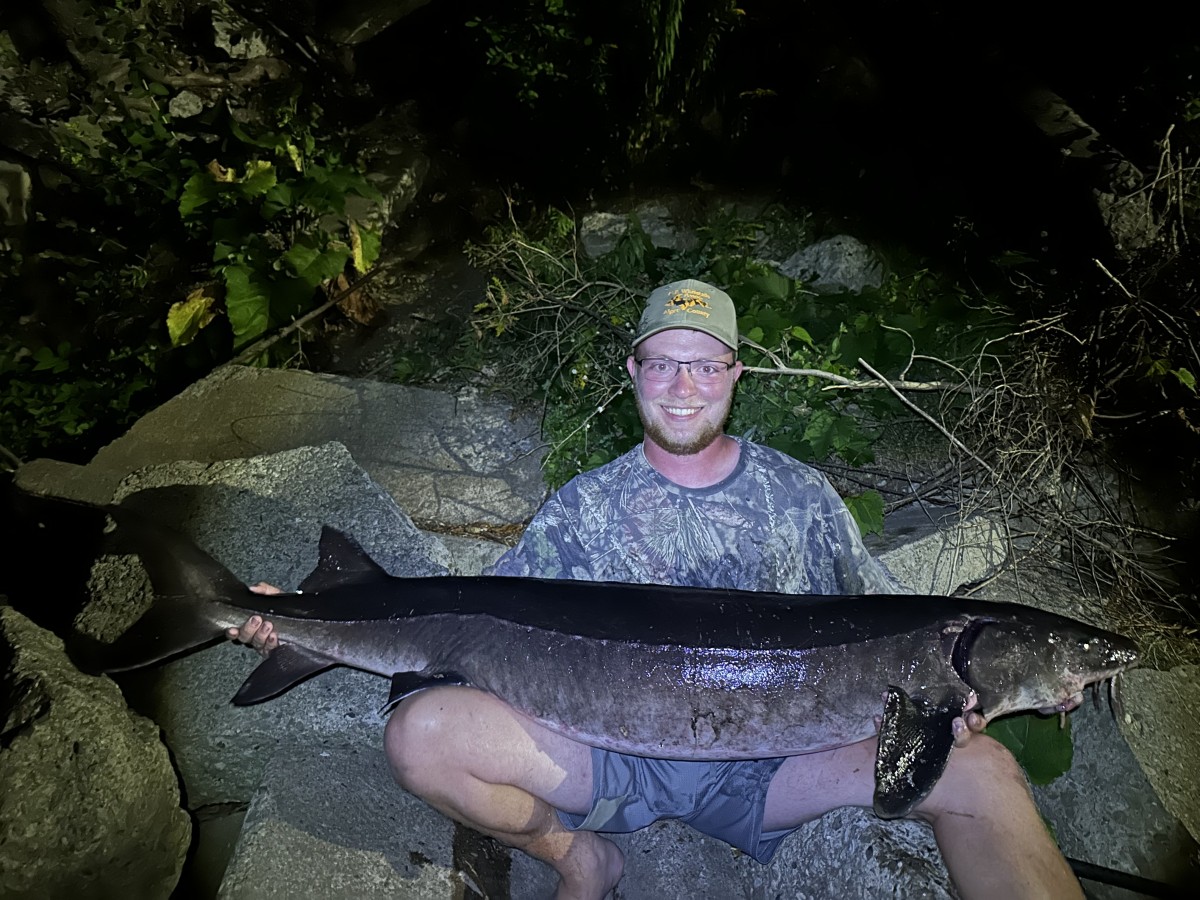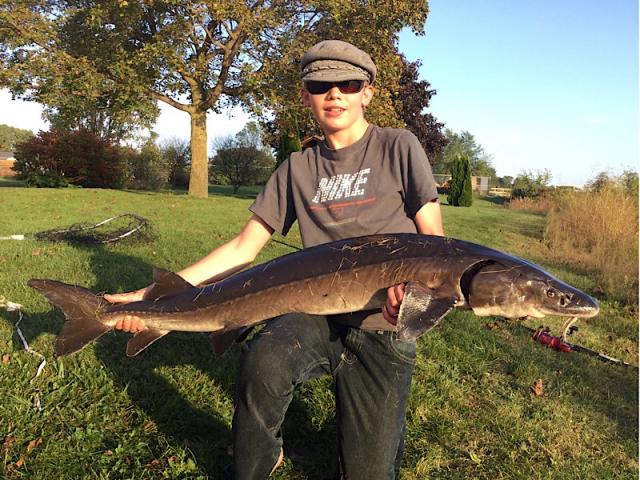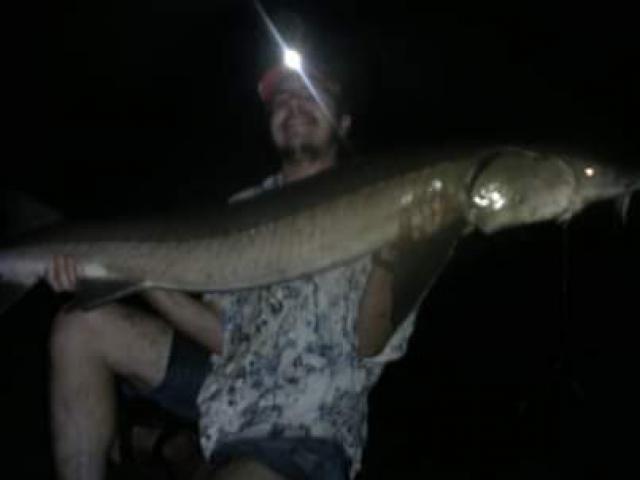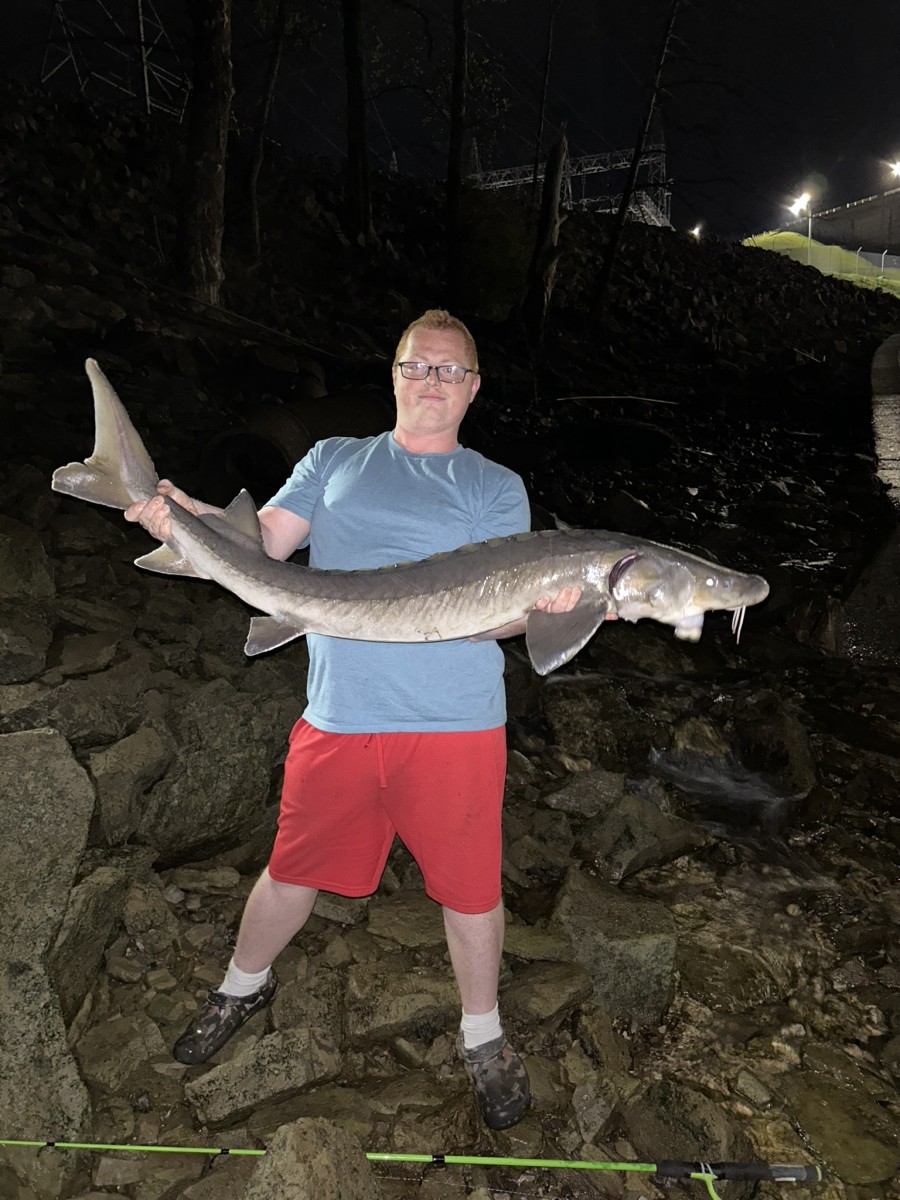Lake sturgeon
(Acipenser fulvescens)
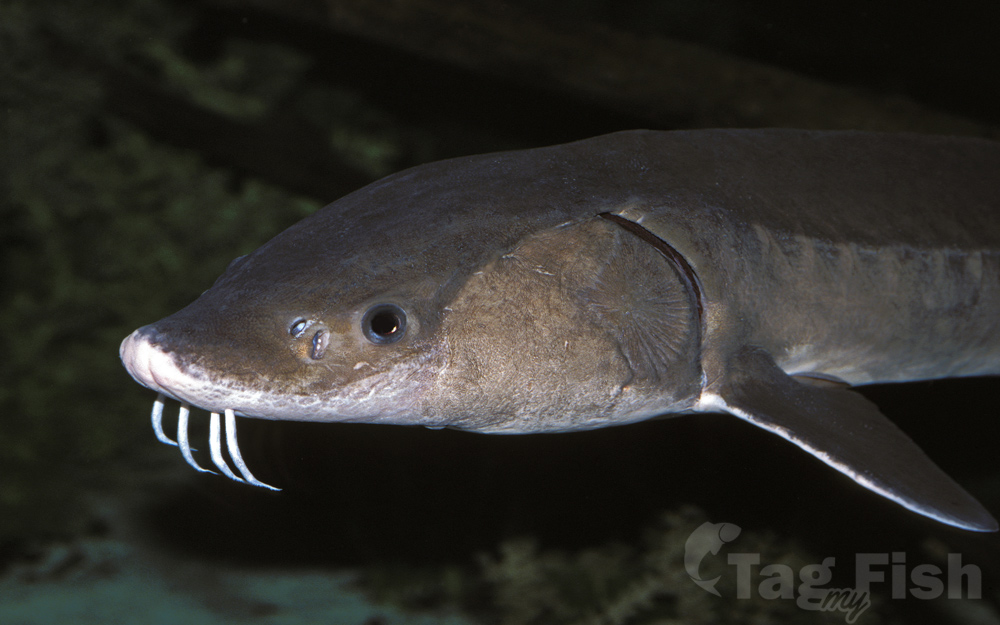
Classification
General data
The lake sturgeon (Acipenser fulvescens), also known as the rock sturgeon, is a North American temperate freshwater fish, one of about 25 species of sturgeon. Like other sturgeons, this species is an evolutionarily ancient bottom feeder with a partly cartilaginous skeleton, an overall streamlined shape and skin bearing rows of bony plates on its sides and back. The fish uses its elongated, spade-like snout to stir up the substrate and sediments on the beds of rivers and lakes while feeding. The lake sturgeon has four purely sensory organs that dangle near its mouth. These organs, called barbels, help the sturgeon to locate bottom-dwelling prey. Lake sturgeons can grow to a relatively large size, topping 7.25 ft (2.2 m) long and weighing over 240 lb (108 kg).
Description
The lake sturgeon has taste buds on and around its barbels near its rubbery, prehensile lips. It extends its lips to vacuum up soft live food, which it swallows whole due to its lack of teeth. Its diet consists of insect larvae, worms (including leeches), and other small organisms (primarily metazoan) it finds in the mud. Fish are rarely found in its diet and are likely incidental items only, with the possible exception of the invasive round goby. Given that it is a large species surviving by feeding on very small species, its feeding ecology has been compared to that of large marine animals, like some whales, which survive by filter-feeding.
Distribution and habitat
This species occurs in the Mississippi River drainage basin south to Alabama and Mississippi. It occurs in the Great Lakes and the Detroit River, east down the St. Lawrence River to the limits of freshwater. In the west, it reaches Lake Winnipeg and the North Saskatchewan, and South Saskatchewan Rivers. In the north, it is found in the Hudson Bay Lowland. In the east, the species lives in Lake Champlain and in some Vermont rivers, including the Winooski, Lamoille and Missisquoi rivers, and Otter Creek. This distribution makes sense in that all these areas were linked by the large lakes that formed as the glaciers retreated from North America at the end of the last ice age (e.g., Lake Agassiz, Lake Iroquois).
These sturgeon often migrate in search of food or suitable spawning locations, or in response to seasonal environmental conditions. Juveniles typically inhabit pools greater than about 6 feet in depth, and adults typically live deep in large lakes. They are not often far from suitable spawning locations. The abundance of prey also plays a large factor in finding a suitable habitat.
